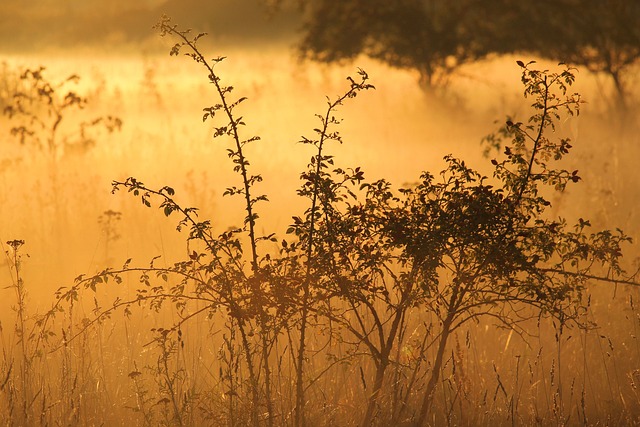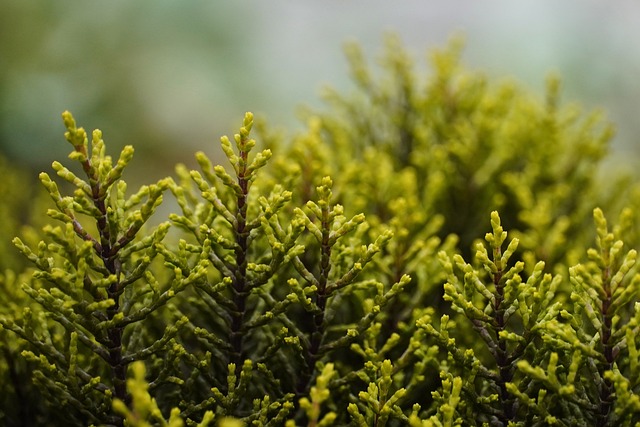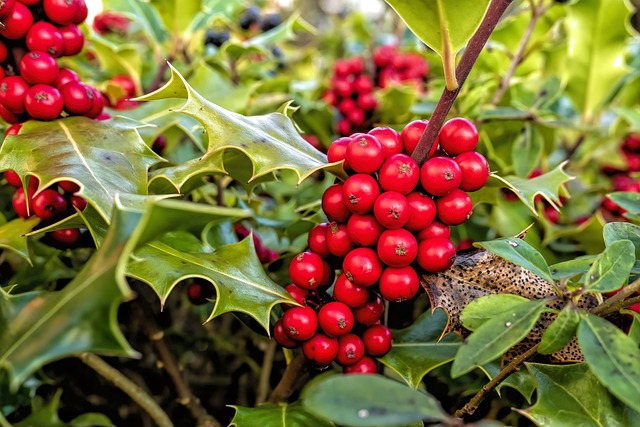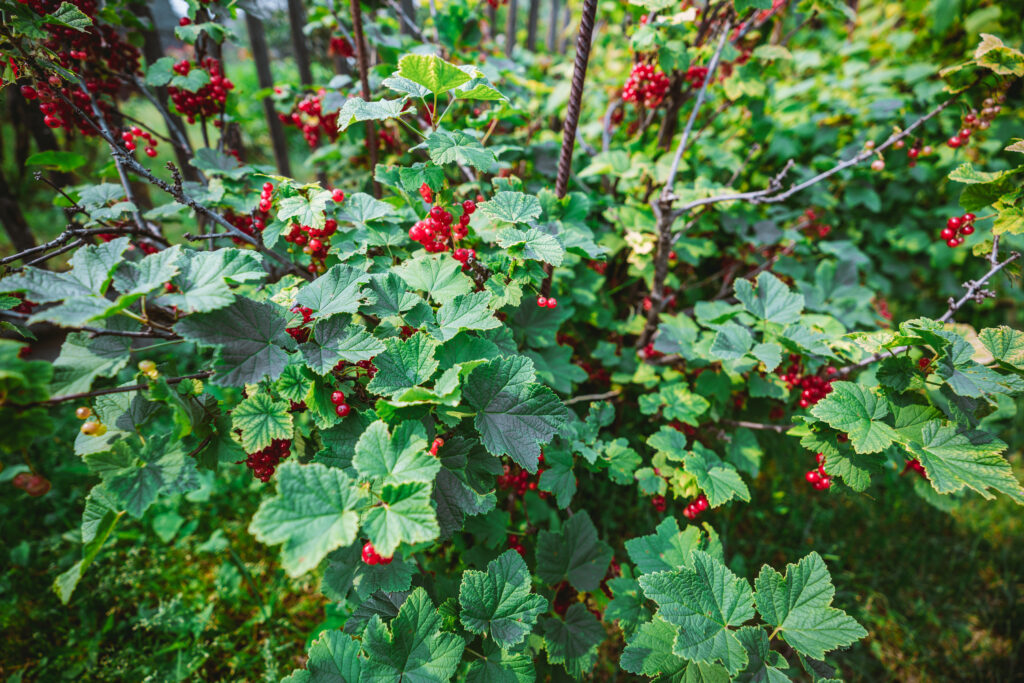Zone 7 is a moderate climate zone that is characterized by mild summers and relatively mild winters. This makes it an ideal environment for growing a wide range of shrubs and bushes. However, to ensure that your shrubs thrive, it is important to plant them at the right time.
The ideal time to plant shrubs in Zone 7 is during the fall season. This is because the soil is still warm enough to encourage root growth before winter sets in.
Additionally, the cooler temperatures and increased rainfall during fall provide the perfect conditions for shrubs to establish themselves. However, if you miss the fall planting season, you can still plant shrubs in early spring before the growing season begins.
Key Takeaways:
- Fall is the ideal time to plant shrubs in Zone 7 as the soil is still warm enough to encourage root growth before winter sets in.
- If you miss the fall planting season, you can still plant shrubs in early spring before the growing season begins.
- To ensure that your shrubs thrive, it is important to choose the right shrubs for your environment, provide adequate soil and drainage, and follow proper planting and care instructions.
See these other top picks:
- When to Plant Seminole Pumpkins in Florida?
- When to Plant Rye Grass in Florida?
- When to Plant Potatoes in Zone 7a?
Understanding Zone 7

Zone 7 is a region in the United States that includes parts of the South and stretches up to the Mid-Atlantic. It is characterized by moderate temperatures, with average winter lows ranging from 0 to 10 degrees Fahrenheit (-18 to -12 degrees Celsius).
The USDA has created a plant hardiness zone map to help gardeners determine which plants are most likely to thrive in their area. Zone 7 is ideal for a variety of bushes and shrubs, both evergreen and deciduous.
However, it is important to choose plants that can tolerate occasional temperatures well below freezing, sometimes even hovering around 0 degrees Fahrenheit (-18 degrees Celsius).
When planning to plant shrubs in Zone 7, it is important to consider the specific microclimate of your garden. Factors such as elevation, exposure to sun and wind, and soil type can all affect the success of your plants.
One advantage of gardening in Zone 7 is the long growing season. The typical growing season lasts about eight months, with the first frost around November 15th and the last one about April 15th. This provides ample time to plant and harvest a wide variety of crops and ornamentals.
When to Plant Shrubs in Zone 7
When it comes to planting shrubs in Zone 7, timing is everything. The ideal time to plant shrubs in Zone 7 is during the spring or fall seasons when the temperatures are cooler and there is more moisture in the air.
Spring is an excellent time to plant shrubs in Zone 7 because the soil is warm and moist, which helps the roots to establish themselves quickly. However, it is important to avoid planting shrubs too early in the spring when there is still a risk of frost. The best time to plant shrubs in the spring is usually in late April or early May.
Fall is also a good time to plant shrubs in Zone 7 because the soil is still warm from the summer months, and the cooler temperatures and increased rainfall help the shrubs to establish themselves before winter sets in. The ideal time to plant shrubs in the fall is usually in September or October.
It is important to avoid planting shrubs in the summer months in Zone 7 because the hot, dry weather can stress the plants and make it difficult for them to establish themselves. If you must plant shrubs in the summer, be sure to water them regularly and provide them with plenty of shade.
In Zone 7, it is also important to consider the winter weather when planting shrubs. It is best to avoid planting shrubs too late in the fall when there is a risk of frost, as this can damage the roots and prevent the shrub from establishing itself properly.
If you do need to plant shrubs in the winter, be sure to choose hardy varieties that can withstand the cold temperatures and harsh weather conditions.
Choosing the Right Shrubs

Choosing the right shrubs to plant in zone 7 can be a daunting task. With so many varieties available, it can be difficult to know where to start. However, by considering a few key factors, it is possible to select the perfect shrubs for your garden.
One important consideration is whether to choose evergreen or deciduous shrubs. Evergreen shrubs provide year-round interest and can be particularly useful in creating privacy or screening.
Some popular evergreen shrubs for zone 7 include wintercreeper and yaupon holly. Deciduous shrubs, on the other hand, provide seasonal interest with their flowers and foliage. They can also be useful in creating a layered effect in a garden.
Another factor to consider is the variety of shrub. There are many different types of shrubs, each with their own unique characteristics. Some popular varieties for zone 7 include hydrangeas, junipers, and viburnums. It is important to research the specific needs of each variety before planting to ensure that they will thrive in your garden.
When selecting shrubs for your garden, it is also important to consider whether they are native to the area. Native shrubs are often well adapted to the local climate and soil conditions, making them easier to care for. They can also provide important habitat for local wildlife.
Finally, if you live in an area with a high population of deer, it may be important to select shrubs that are deer-resistant. Some deer-resistant shrubs for zone 7 include boxwood, holly, and butterfly bush.
By taking these factors into consideration, it is possible to choose the perfect shrubs for your garden in zone 7.
Soil and Drainage Requirements
When it comes to planting shrubs in Zone 7, it is important to consider the soil and drainage requirements. Most shrubs prefer moist, well-drained soil to thrive. However, some varieties can tolerate different soil types. It is essential to research the specific shrub species to determine the ideal soil type.
In addition to soil type, drainage is a crucial factor to consider when planting shrubs. Poor drainage can lead to root rot and other diseases, which can ultimately kill the shrub.
To ensure proper drainage, it is recommended to plant shrubs on a slight slope or in raised beds. If the soil in the planting area is heavy and does not drain well, it may be necessary to amend the soil with organic matter such as compost or peat moss.
Mulching is another important consideration when planting shrubs. Mulch helps to retain moisture in the soil, suppress weeds, and regulate soil temperature.
It is recommended to apply a layer of mulch around the base of the shrub, leaving a few inches of space between the mulch and the trunk of the shrub. This helps to prevent moisture from accumulating around the trunk, which can lead to rot and other issues.
Popular Shrubs for Zone 7
Zone 7 is an excellent region for growing shrubs, with its mild winters and long growing season. There are numerous shrubs that thrive in this region, providing a range of colors, textures, and sizes to choose from. Here are some of the most popular shrubs for Zone 7:
1. Holly

Holly is a popular broad-leaved evergreen shrub that is available in various sizes. It is an excellent choice for Zone 7 gardens because it can tolerate both sun and shade and is relatively low maintenance. Holly is also known for its attractive red berries that add a pop of color to the garden in the winter.
2. Hydrangea
Hydrangeas are a classic shrub that can add a touch of elegance to any garden. They are available in a range of colors, including blue, white, and pink, and can grow up to 6 feet tall. Hydrangeas prefer well-drained soil and partial shade, making them an excellent choice for Zone 7 gardens.
3. Wintercreeper
Wintercreeper is a hardy evergreen shrub that is perfect for Zone 7 gardens. It is available in various sizes and can be used as a ground cover or trained to climb a trellis or wall. Wintercreeper is also known for its attractive foliage, which turns a striking red color in the fall.
4. Yaupon Holly
Yaupon holly is a tough evergreen shrub that is native to the southeastern United States. It is an excellent choice for Zone 7 gardens because it can tolerate both sun and shade and is relatively low maintenance. Yaupon holly is also known for its attractive red berries that add a pop of color to the garden in the winter.
5. Juniper
Junipers are a popular choice for Zone 7 gardens because they are hardy, drought-tolerant, and low maintenance. They are available in various sizes and can be used as a ground cover or trained to grow as a small tree. Junipers prefer well-drained soil and full sun.
6. Boxwood
Boxwood is a classic evergreen shrub that is perfect for creating formal hedges or topiaries. It is available in various sizes and can be shaped into a range of geometric shapes. Boxwood prefers well-drained soil and partial shade.
Planting and Care Instructions
When planting shrubs in Zone 7, it is important to choose the right time of year to ensure the best possible growth. The ideal time to plant shrubs in Zone 7 is in the spring or fall, when the soil is moist and temperatures are cooler. This will give the shrub time to establish its roots and prepare for the upcoming season.
Before planting, make sure the soil is well-draining and has the right pH balance for the shrub you have chosen. Most shrubs prefer slightly acidic soil with a pH between 5.0 and 6.5. If the soil is too alkaline, you can lower the pH by adding sulfur or peat moss. If it is too acidic, you can raise the pH by adding lime.
When planting, dig a hole that is twice as wide and just as deep as the root ball. Gently remove the shrub from its container and loosen any tangled roots. Place the shrub in the hole and backfill with soil, making sure not to bury the stem.
Water the shrub thoroughly and add a layer of mulch around the base to help retain moisture and suppress weeds.
To care for your shrubs, make sure to water them regularly, especially during hot, dry spells. Most shrubs prefer about an inch of rainfall or irrigation per week. You can also add a layer of mulch around the base of the shrub to help retain moisture and regulate soil temperature.
Pruning is also important for maintaining healthy shrubs. Most shrubs benefit from annual pruning to remove dead or damaged branches and promote new growth. Pruning should be done in late winter or early spring before new growth appears.
Dealing with Common Diseases

Planting shrubs in Zone 7 can be challenging, as they are susceptible to a variety of diseases. However, by taking proper precautions, gardeners can ensure that their shrubs remain healthy and vibrant.
One of the most common shrub diseases is Fire Blight, a bacterial disease that causes the twigs, shoots, and stems of the plant to shrivel and turn black. To prevent the spread of the disease, gardeners should prune the affected areas right away, being sure to clean their pruning tools between cuts.
Additionally, it is recommended to avoid planting susceptible species, such as apple, pear, and quince, in areas where Fire Blight has been present.
Another common shrub disease is Powdery Mildew, a fungal growth that leaves a white powder on surfaces of shrub foliage. To treat Powdery Mildew, gardeners should remove parts of the shrub that are infected with the disease and prune shrubs to improve air circulation.
It is also recommended to hold off on all fertilization until the disease has been altered and the plant health has improved.
Gardeners should also be aware of Boxwood Blight, a fungal disease that affects boxwood shrubs. The disease causes leaf spots, stem cankers, and defoliation, and can be spread by contaminated pruning tools and infected plants.
To prevent the spread of Boxwood Blight, gardeners should avoid planting boxwood shrubs in areas where the disease has been present, and should sanitize pruning tools after each use.
Finally, gardeners should choose hardy shrub species that are resistant to common diseases in Zone 7. Some examples include the American Holly, which is resistant to Powdery Mildew, and the Crape Myrtle, which is resistant to Powdery Mildew and Fire Blight.
Incorporating Other Plants
When planting shrubs in Zone 7, it’s important to consider how they will complement other plants in your garden. By incorporating perennials, annuals, and vines, you can create a beautiful and diverse landscape that will thrive throughout the growing season.
Perennials are a great choice for adding color and texture to your garden. They come back year after year and require minimal maintenance once established. Some popular perennials for Zone 7 include black-eyed Susan, coneflower, and daylily. These plants can be planted alongside shrubs to create a layered effect, with the shrubs providing structure and the perennials adding pops of color.
Annuals are another option for adding color to your garden. Unlike perennials, they only last for one growing season. However, they often bloom continuously throughout the season, providing a long-lasting source of color.
Some popular annuals for Zone 7 include petunias, marigolds, and zinnias. These plants can be used to fill in gaps between shrubs or to create a border around the garden.
Vines are a great way to add height and interest to your garden. They can be trained to climb up trellises, fences, or even the branches of shrubs. Some popular vines for Zone 7 include clematis, honeysuckle, and wisteria. These plants can be used to create a focal point in the garden or to add visual interest to a wall or fence.
When choosing plants to incorporate with shrubs, it’s important to consider their growing requirements. Make sure to choose plants that have similar light and water needs to your shrubs. This will help ensure that all of your plants thrive and grow together.
Final Thoughts

Planting shrubs in Zone 7 can be a rewarding experience for gardeners. With the right care, these shrubs can thrive and produce beautiful foliage year-round.
However, it’s important to keep in mind that not all shrubs are suitable for this climate. Gardeners must choose hardy evergreen shrubs that can withstand occasional temperatures well below freezing.
When it comes to planting shrubs, timing is crucial. As discussed earlier, the best time to plant shrubs in Zone 7 is during the fall or spring when the soil is moist and temperatures are mild. Gardeners should avoid planting shrubs during the hot summer months as the heat can stress out the newly planted shrubs.
Once planted, shrubs require proper care to ensure they thrive. Regular watering, pruning, and fertilizing are essential for producing healthy and vibrant shrubs. Gardeners should also be aware of any pests or diseases that may affect their shrubs and take necessary precautions to prevent and treat them.
Frequently Asked Questions
When is the best time to plant shrubs in Zone 7?
The best time to plant shrubs in Zone 7 is during the fall or spring when the soil is moist and temperatures are mild. Planting during the summer can be challenging due to the high temperatures and the need for frequent watering.
However, planting during the winter is not recommended as the soil is often too cold and frozen.
What are some native evergreen shrubs for Zone 7?
Some native evergreen shrubs for Zone 7 include Mountain Laurel, Inkberry, and American Holly. These shrubs are adapted to the local climate and soil conditions and require minimal maintenance.
What are some full sun shrubs for Zone 7?
Some full sun shrubs for Zone 7 include Butterfly Bush, Russian Sage, and Rose of Sharon. These shrubs are known for their colorful blooms and ability to thrive in hot and dry conditions.
Can Zone 7 plants grow in Zone 8?
Zone 7 plants may be able to grow in Zone 8, but it depends on the specific plant and its adaptability to the local climate and soil conditions. It is always best to research the specific plant’s requirements before attempting to grow it in a different zone.
Is it better to plant shrubs in the fall or spring?
Both fall and spring are good times to plant shrubs in Zone 7. Fall planting allows the shrub to establish roots before winter, while spring planting allows the shrub to take advantage of the growing season. However, it is important to avoid planting during the hottest months of summer.
What is the best month to plant shrubs in Zone 7?
The best month to plant shrubs in Zone 7 is typically during the fall or spring. For fall planting, September through November is ideal, while for spring planting, March through May is recommended. ]
It is important to avoid planting during the hottest months of summer and the coldest months of winter.

Hey, I’m Lisa and I’ve been an avid gardener for over 30 years. I love writing, talking and living in the garden! Feel free to connect with me on my socials below


